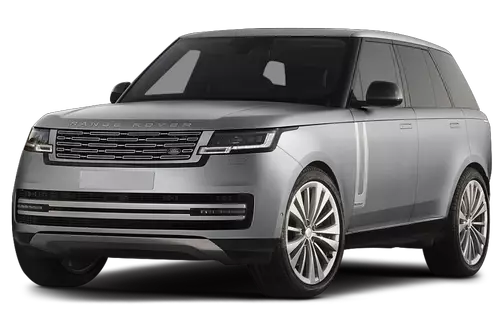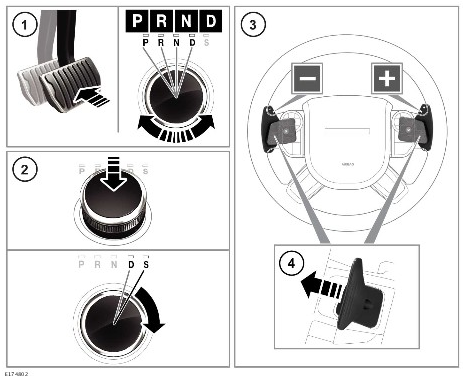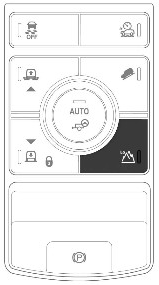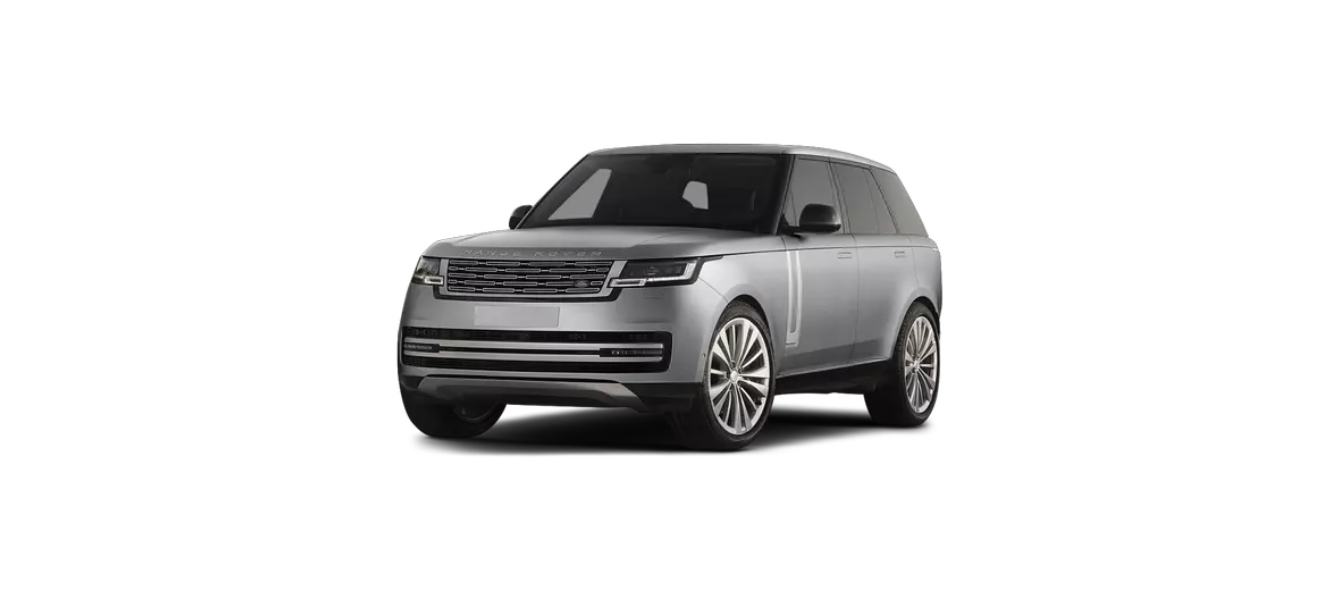2022 Land Rover Range Rover Transmission

AUTOMATIC TRANSMISSION

Before exiting the vehicle, make sure that the vehicle is stationary. Select Park (P). Apply the Electric Parking Brake (EPB). Switch the engine off. The vehicle can move unexpectedly with any other gear position selected, which may result in death or serious injury.
Never select P while the vehicle is in motion. Doing so can result in serious transmission damage.
Never select Reverse (R) while the vehicle is in forward motion. Doing so can result in serious transmission damage.
Never select a forward gear while the vehicle is moving backward. Doing so can result in serious transmission damage.
Do not press the accelerator pedal when making a gear selection. Doing so can result in serious transmission damage.
Do not allow the vehicle to remain stationary for a prolonged period, with a drive gear selected and the engine running. In this event, always select P or Neutral (N), and apply the EPB. The vehicle may move unexpectedly with any other gear position selected, which may result in damage to the vehicle.
The selection status of the gear selector and the steering wheel’s paddle shifts is displayed in the message center.
When the engine starts, the gear selector elevates from its lowered, stored position and the transmission remains engaged in P.
- To select Drive (D), N, R, or P, press the brake pedal and then rotate the gear selector to the required position. The relevant indicator lamp, by the gear selector, illuminates to confirm selection.
When in D, gear changing is fully automatic. The gear change shift points are determined by the accelerator pedal position and the vehicle’s current speed. To achieve rapid acceleration (kickdown) while in, D quickly press the accelerator pedal to its full travel. When the accelerator pedal is relaxed, normal automatic gear changing resumes.
NOTESIf pressure is applied to the gear selector before the brake pedal is pressed, the selected gear may not be available. In this situation, remove pressure from the gear selector, make sure that the brake pedal is pressed, and then select the required gear again.
- To select Sport (S) mode from D, press the gear selector down and rotate to S. The relevant indicator lamp, by the gear selector, illuminates to confirm selection. The transmission remains in the lower gears for longer, improving mid-range performance. To deselect S mode, rotate the gear selector back to D.
NOTES
Before selecting D, R, N, or P, make sure that the vehicle is stationary and the brakes are applied.
- Steering wheel paddle shifts: Allow manual gear selection, while the selector is in either the D or S position. Lightly pull the left-side paddle shift for down-shifts or lightly pull the right-side paddle shift for up-shifts.
NOTES
The paddle shifts can be configured to be active in both D and S, or active in S only. Use the Vehicle settings instrument panel menu. See INSTRUMENT PANEL MENU.
The paddle shifts can be effective when rapid acceleration and engine braking are required. A gearshift indicator warning lamp illuminates briefly at the recommended (up-shift) gear change point. With D selected, each manual gear change via the steering wheel paddle shifts is temporary. The change is held while the driver is accelerating, decelerating, cornering, or continually requesting manual gearshift changes via the steering wheel paddle shifts. See GEARSHIFT (GREEN).
NOTESIf continued use of the steering wheel paddle shifts is required, select S.
- To manually change gear, briefly pull the relevant steering wheel paddle shift. To exit manual gear selection mode, pull and hold the right-side paddle shift for approximately 1 second. The automatic transmission returns to operation in D or S, dependent on the current position of the gear selector. Alternatively, rotate the gear selector from S to D. The automatic transmission returns to operation in D.
If the gear selector is obstructed, remove the obstruction and then start the engine. The gear selector should elevate.
If the gear selector fails to elevate and there is no obstruction, a system fault is indicated. The gear selector can still be used in the lowered position. In this event, P is not automatically selected when the engine is switched off. P must be selected manually. Consult a retailer/authorized repairer at the earliest opportunity.
SELECTING HIGH AND LOW RANGE
Do not change from high range to low range while the vehicle is in motion. Doing so can result in damage to the transmission.

The Lo button is used to alternate the engagement of the transfer case between low range or high range.
The Lo button only operates with the engine running.
Low range should only be used in situations where low speed maneuvering is necessary, including more extreme off-road conditions. High range should be selected for normal road driving.
Press the Lo button, located on the center console, to engage the transfer case into low range. The button’s LED indicator lamp flashes during the change and remains illuminated to confirm selection. The message center briefly displays the Low Range Selected message. The instrument panel also illuminates the low range warning lamp. See LOW RANGE (GREEN)
Press the Lo button again to engage the transfer case into high range. The button’s LED indicator lamp flashes during the change and extinguishes to confirm selection. The message center briefly displays the High Range Selected message. The low range warning lamp also extinguishes.
The vehicle should be stationary, with the engine running, during a transfer case range change selection.
Operate as follows:
- Use the gear selector to engage Neutral (N).
- Press the Lo button to engage the transfer case into high or low range, as required.
NOTES
If the Lo button is pressed when the vehicle’s speed is too high, the message center displays the maximum speed for the range change.
NOTESIf the Lo button is pressed before N is selected, the message center displays a relevant message.
- Use the gear selector to engage Drive (D).
The procedure can also be used for changing from low range to high range with the vehicle traveling at a speed of less than 37 mph (60 km/h).
LIMP-HOME MODE
The driver should be aware that the vehicle’s performance is reduced and use of the steering wheel’s paddle shifts is disabled. Failure to take this into account when driving may result in accidents causing serious injury or death.
If a transmission system fault is detected, the message center displays a warning message. In this event, only limited gears may become available. If possible, the vehicle should be carefully driven to the nearest place of safety. In this event, seek qualified assistance.
Some transmission faults may cause the gear selector to be locked in position until the ignition is switched off. A flashing gear status in the message center indicates that the driver’s gear request cannot be engaged. In this event, select Neutral (N) and then select the required gear change again.
If the transmission is still unable to engage the requested gear, contact a retailer/authorized repairer.

